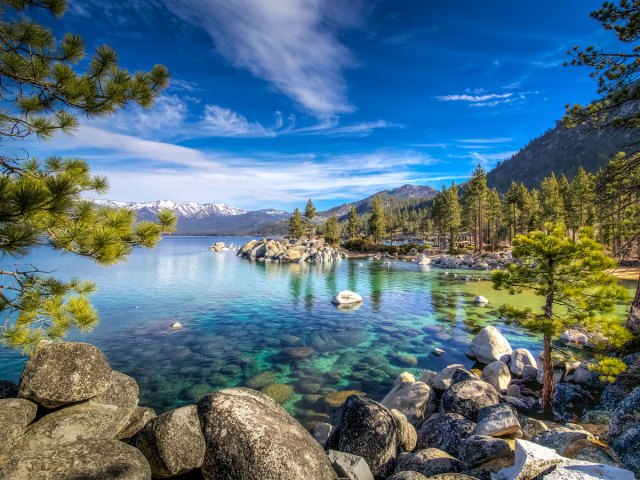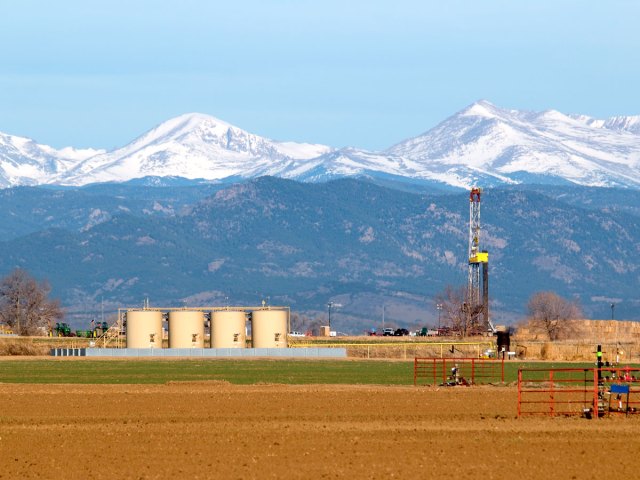In 1912, Arizona became the final state admitted to the contiguous U.S., which was the last time state borders changed (aside from Alaska and Hawaii joining the Union in 1959). But that’s not for lack of trying. Every once in a while, discussions of state border changes bubble up in the news. Often, it’s because a handful of counties are seeking to form their own state; other times, counties may be looking to join another state across a border line.
The idea is hardly new: Regions that feel culturally, economically, or politically alienated from their state capitals have been floating secession proposals since the United States’ earliest days. While some of these movements have interesting momentum, legally, they are quite a long shot, since state border changes require approval from both Congress and the legislatures of every state involved. Still, there is a chance that some U.S. state borders could change in our lifetimes — here are five of the most likely scenarios.
Idaho and Oregon

Of all the modern state boundary change proposals, the “Greater Idaho” campaign seems to have the most traction. Since 2020, organizers have pushed to make 13 rural counties in eastern Oregon part of Idaho. Supporters argue that the move makes cultural, political, and economic sense — eastern Oregon’s farming and ranching communities have more in common with neighboring Idaho than with the Beaver State’s capital, Salem, or coastal cities such as Portland.
The idea has shown surprising persistence. Voters in the relevant Oregon counties have formally endorsed exploring the move through local ballot measures, and Idaho’s Legislature has passed a resolution expressing interest in talks. Oregon lawmakers, for their part, have declined to address the issue. Polls show that public opinion is mixed, and some critics have voiced concern that road funding and schools could suffer under a new state system.
Illinois and Indiana

For many years, frustration with Chicago-centric policies have prompted several rural counties in southern Illinois to explore alternatives, including breaking away from Illinois to form a new state. Since 2020, 33 Illinois counties have passed advisory votes supporting some form of secession.
In Indiana, however, some leaders are suggesting an alternative: Skip making something new and just join the Hoosier State instead. A bill to explore annexation was even floated in the Indiana Legislature, where House Speaker Todd Huston touted their low-tax, family-friendly appeal. In 2025, Indiana also created a commission to study the possibility of absorbing the 33 Illinois counties. However, Illinois has not appointed representatives to participate, and the state has so far shown no interest in losing counties.
While supporters argue the move could better align governance with local priorities, significant obstacles remain. That includes about $30 billion of Illinois’ debt that Indiana could inherit, according to G.H. Merritt, chairman of the New Illinois group advocating for secession. And even with grassroots momentum and a friendly neighboring state, there is so far no practical path forward without Illinois’ consent.
Maryland and West Virginia

Chatter of parts of western Maryland leaving the state has been around for decades, mainly driven by residents frustrated with policies set in the capital of Annapolis. In recent years, however, lawmakers and officials have taken a more active role.
In 2021, legislators from Garrett, Allegany, and Washington counties in Maryland formally asked West Virginia’s leaders to explore letting them join the state. In 2025, West Virginia state Senator Chris Rose introduced a resolution inviting 30 counties across Maryland and Virginia to consider the same move, citing shared Appalachian heritage, rural lifestyles, and regional priorities.
The discussion comes amid Maryland Governor Wes Moore’s recent redistricting commission, aimed at ensuring “fair and representative maps” across the state. Redistricting does not change borders, but in this case, it attempts to address the same underlying concerns driving western Maryland residents’ interest in joining West Virginia: a government that more closely reflects regional priorities. Any actual border change would require approval from state legislatures and Congress; so far, neither Maryland nor Virginia has engaged in formal talks with West Virginia.
California and… California

California has a long history of secession talk. The proposed state of Jefferson, dating back to the 1940s, sought to combine parts of Northern California and southern Oregon into a new, largely rural state. More recently, Silicon Valley flirted with the idea of forming its own mini-states in the 2010s, though neither effort advanced.
The latest idea suggests splitting the Golden State in two. Assemblyman James Gallagher introduced Assembly Joint Resolution 23 in August 2025, a plan that would create a new state from 35 inland counties, including much of Northern California, the Sierra Nevadas, the Central Valley, and the Inland Empire. Coastal regions would make up their own state. Local officials are divided on the proposal, which, according to Gallagher, is ultimately about proper representation for disparate regions.
Colorado and Wyoming

Over the past 10 years, Colorado has occasionally seen border change proposals pop up from rural counties seeking greater local representation. In 2013, 11 northeastern Colorado counties voted on whether to secede and form a new U.S. state, but only five counties voted in favor. In 2021, Weld County, which voted against secession in 2013, was in the news again looking to instead become part of Wyoming due to Colorado’s regulations on oil and gas drilling, a major industry in the county.
While some counties — in Colorado and across the country — have passed resolutions or held advisory votes on secession, there are rarely formal commissions and legislative action taking place. For now, many of these movements remain symbols of a broader quest for balance between urban and rural residents.
More from our network
Daily Passport is part of Inbox Studio, which publishes content that uplifts, informs, and inspires.
























